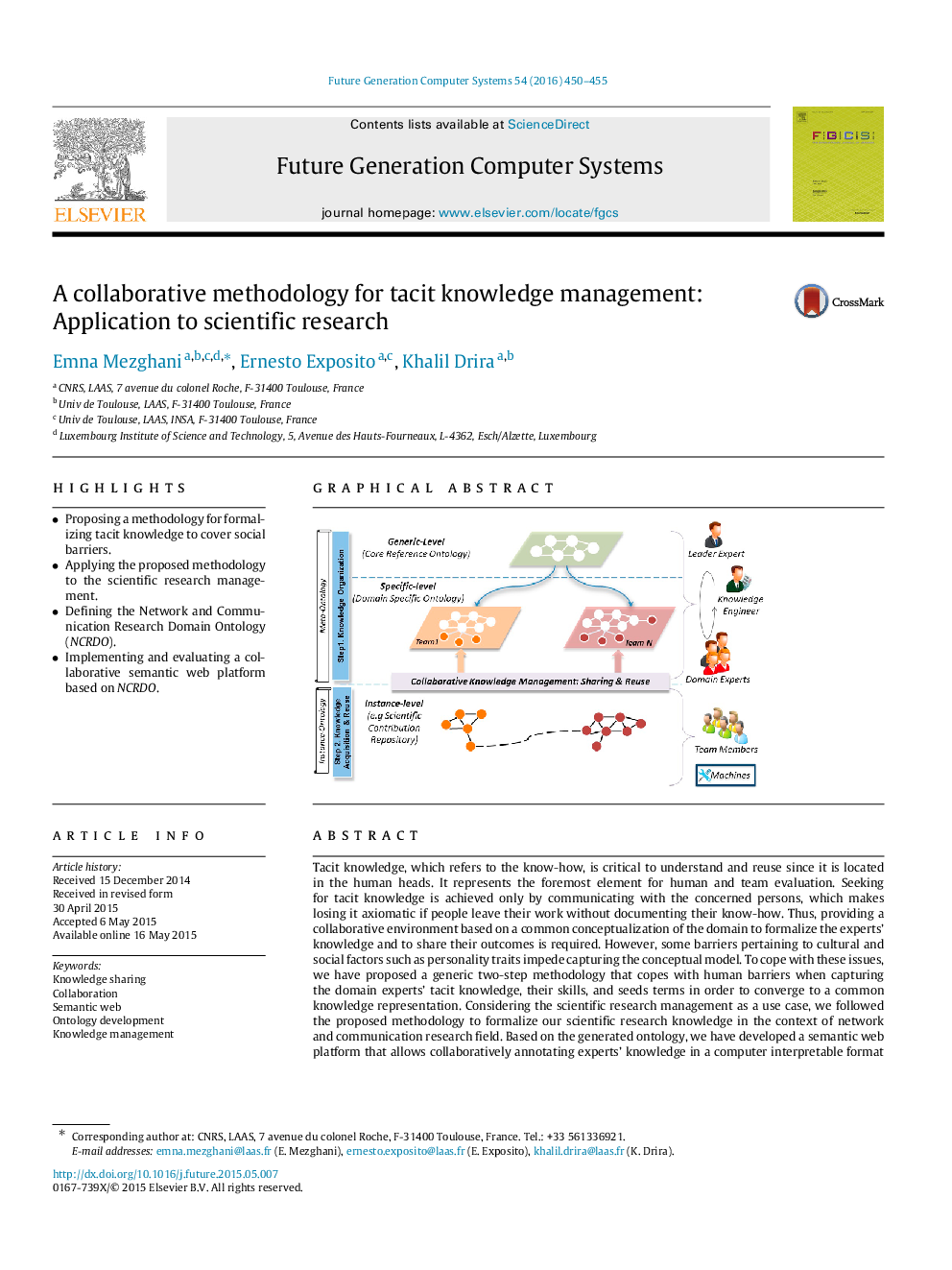| کد مقاله | کد نشریه | سال انتشار | مقاله انگلیسی | نسخه تمام متن |
|---|---|---|---|---|
| 424555 | 685587 | 2016 | 6 صفحه PDF | دانلود رایگان |
واژگان کلیدی:
1.مقدمه
2.یک روش دو مرحله ای عمومی برای ایجاد آنتولوژی
3.کاربرد در مورد مطالعه: مدیریت تحقیقات علمی
4.ارزیابی
5.مطالعات مرتبط
شکل 1. روش شناسی دو مرحله ای کلی برای رسمی سازی دانش ضمنی متخصصان
شکل 2. چکیده ای از طبقات اصلی و روابط شبکه و آنتولوژی حوزه تحقیقات شکبه و ارتباطات (NCRDO). (به منظور تفسیر منابع و علائم و اختصارات شکل، خوانندگان را به نسخه آنلاین این مقاله ارجاع می دهم.)
شکل 3. ارزیابی نتایج بر اساس بازخوردهای کاربران نهایی
6.نتیجه گیری
• Proposing a methodology for formalizing tacit knowledge to cover social barriers.
• Applying the proposed methodology to the scientific research management.
• Defining the Network and Communication Research Domain Ontology (NCRDO).
• Implementing and evaluating a collaborative semantic web platform based on NCRDO.
Tacit knowledge, which refers to the know-how, is critical to understand and reuse since it is located in the human heads. It represents the foremost element for human and team evaluation. Seeking for tacit knowledge is achieved only by communicating with the concerned persons, which makes losing it axiomatic if people leave their work without documenting their know-how. Thus, providing a collaborative environment based on a common conceptualization of the domain to formalize the experts’ knowledge and to share their outcomes is required. However, some barriers pertaining to cultural and social factors such as personality traits impede capturing the conceptual model. To cope with these issues, we have proposed a generic two-step methodology that copes with human barriers when capturing the domain experts’ tacit knowledge, their skills, and seeds terms in order to converge to a common knowledge representation. Considering the scientific research management as a use case, we followed the proposed methodology to formalize our scientific research knowledge in the context of network and communication research field. Based on the generated ontology, we have developed a semantic web platform that allows collaboratively annotating experts’ knowledge in a computer interpretable format that can be shared and reused by human and machines. Our evaluation is based on end users’ quality of experience and feedbacks.
Figure optionsDownload as PowerPoint slide
Journal: Future Generation Computer Systems - Volume 54, January 2016, Pages 450–455
